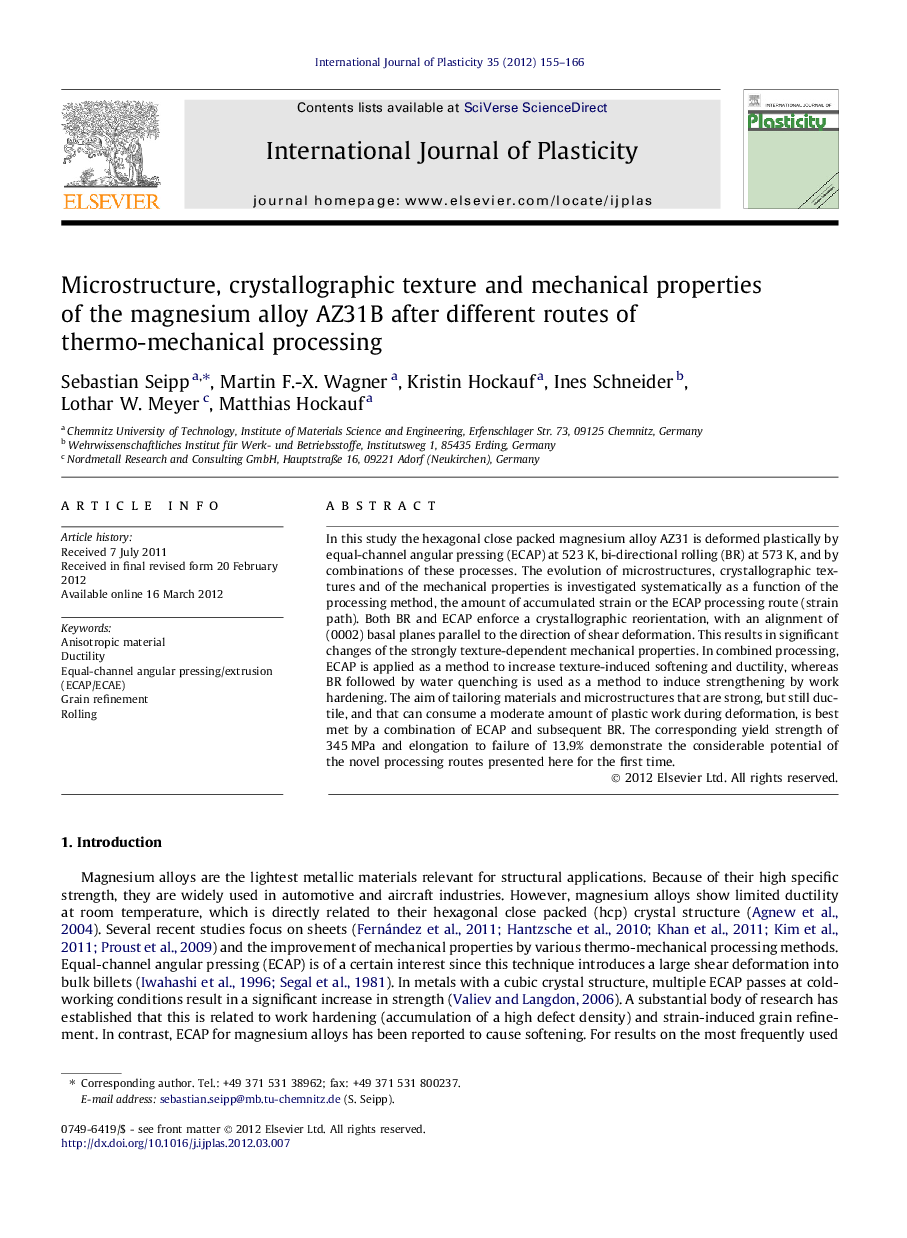| Article ID | Journal | Published Year | Pages | File Type |
|---|---|---|---|---|
| 787072 | International Journal of Plasticity | 2012 | 12 Pages |
In this study the hexagonal close packed magnesium alloy AZ31 is deformed plastically by equal-channel angular pressing (ECAP) at 523 K, bi-directional rolling (BR) at 573 K, and by combinations of these processes. The evolution of microstructures, crystallographic textures and of the mechanical properties is investigated systematically as a function of the processing method, the amount of accumulated strain or the ECAP processing route (strain path). Both BR and ECAP enforce a crystallographic reorientation, with an alignment of (0002) basal planes parallel to the direction of shear deformation. This results in significant changes of the strongly texture-dependent mechanical properties. In combined processing, ECAP is applied as a method to increase texture-induced softening and ductility, whereas BR followed by water quenching is used as a method to induce strengthening by work hardening. The aim of tailoring materials and microstructures that are strong, but still ductile, and that can consume a moderate amount of plastic work during deformation, is best met by a combination of ECAP and subsequent BR. The corresponding yield strength of 345 MPa and elongation to failure of 13.9% demonstrate the considerable potential of the novel processing routes presented here for the first time.
► AZ31 processed by ECAP and/or bi-directional rolling at 523 and 573 K. ► ECAP increases texture-induced softening and ductility. ► Bi-directional rolling and water quenching enhances strength. ► Interrelation of microstructures, crystallographic textures and mechanical properties. ► Novel route leads to yield strength of 345 MPa and elongation to failure of 13.9%.
